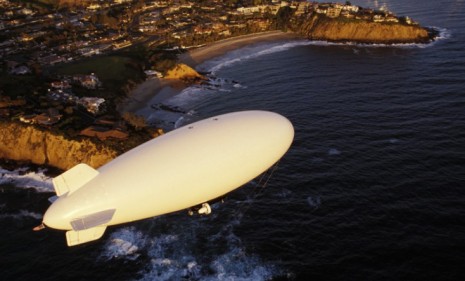Can a giant blimp cool the planet?
Scientists want to install a stadium-size blimp 12 miles above Earth to pump out sunlight-reflecting particles — much like a volcano

Could Goodyear save the planet? Well, not quite. But scientists from several U.K. universities have proposed floating a massive particle-spewing blimp over the Earth in the hope that its emissions will cool our warming planet. Will this government-funded project produce any meaningful results, or is it just another bizarre engineering pipe dream? Here, a guide:
What exactly are scientists proposing?
An enormous blimp, roughly the size of the Rose Bowl stadium, that floats 12 miles above the ground. A hose tethered to a ship in the ocean would pump about a million tons of particles each year up to the blimp where they would be distributed into the upper atmosphere. These tiny particles — salt, sulfates, clay, or metallic oxides — would reflect sunlight back into space, resulting in a cooler planet. Or so the theory goes.
The Week
Escape your echo chamber. Get the facts behind the news, plus analysis from multiple perspectives.

Sign up for The Week's Free Newsletters
From our morning news briefing to a weekly Good News Newsletter, get the best of The Week delivered directly to your inbox.
From our morning news briefing to a weekly Good News Newsletter, get the best of The Week delivered directly to your inbox.
Where did the blimp advocates come up with this idea?
Volcanoes. Massive eruptions like the 1991 Mount Pinatubo volcanic eruption hurl tons of particles into the atmosphere, and for two years after Mount Pinatubo blew, average global temperatures dropped by about one degree. The same principle, scientists hope, could turn back the warming trend caused by climate change.
Will this really work?
Nobody knows, so the British government is helping to fund a small test project in which a 62-foot balloon pumping ordinary tap water into the air will be hoisted above an abandoned airfield in Norfolk, England.
A free daily email with the biggest news stories of the day – and the best features from TheWeek.com


